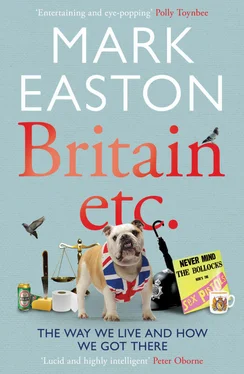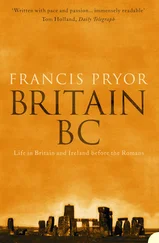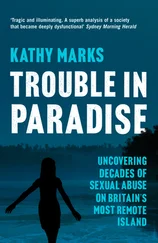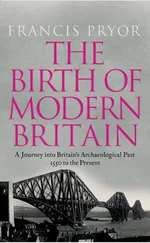8. D. Tibbatts, Your Parks: The Benefits of Parks and Greenspace (Urban Parks Forum, 2002)
9. M. L. Gothein, History of Garden Art (J. M. Dent & Son, 1913)
10. A. Bottomley and N. Moore, ‘From walls to membranes: fortress polis and the governance of urban public space in twenty-first-century Britain’, Law and Critique , 18 (2007)
11. Select Committee on Environment, Transport and Regional Affairs, Town and Country Parks (TSO, 1999), www.publications.parliament.uk
1. J. Stiglitz, A. Sen and J. P. Fitoussi, Report by the Commission on the Measurement of Economic Performance and Social Progress (2009)
2. The Istanbul Declaration (OECD, 2007), http://www.oecd.org
3. D. Cameron, ‘The next age of government’, TED conference, 16 February 2010, www.ted.com
4. P. Noonan, ‘There is no time, there will be time’, Forbes ASAP , 30 November 1998
5. Declaration on Social Progress and Development (United Nations, 1969), www.un.org
6. D. Kahneman, E. Diener and N. Schwarz, Well-Being: The Foundations of Hedonic Psychology (Russell Sage Foundation, 1999)
7. Strategy Unit, Life Satisfaction: The State of Knowledge and Implications for Government (Cabinet Office, 2002), www.nationalarchives.gov.uk
8. R. Layard, Happiness: Lessons from a New Science (Penguin, 2005)
1. R. Brown, ‘Racism and immigration in Britain’, International Socialism Journal , 68 (1995)
2. ‘Citizenship: A History of People, Rights and Power in Britain’, The National Archives, www.nationalarchives.gov.uk
3. G. Clayton, Textbook on Immigration and Asylum Law (Oxford University Press, 2010)
4. I. R. G. Spencer, British Immigration Policy since 1939: The Making of Multi-racial Britain (Routledge, 1997)
5. B. Carter, C. Harris and S. Joshi, ‘The 1951–55 Conservative Government and the racialisation of black immigration’, Policy Papers in Ethnic Relations , 11 (1987)
6. Home Office, Secure Borders, Safe Haven: Integration With Diversity in Modern Britain (TSO, 2002)
7. M. Prestwich, Edward I (University of California Press, 1988)
8. Cabinet Papers 1946 – 68 , The National Archives, www.nationalarchives.gov.uk
9. Andrew Neather, ‘Don’t listen to the whingers — London needs immigrants’, London Evening Standard , 23 October 09
1. P. Colquhoun, A Treatise on the Police of the Metropolis (H. Fry for C. Dilly, 1795)
2. W. Allen and Y. Barzel, ‘The evolution of criminal law and police during the industrial revolution’, Working Papers (Simon Fraser University, 2007)
3. Justice Committee, The Crown Prosecution Service: Gatekeeper of the Criminal Justice System (House of Commons, 2009)
4. R. Reiner, ‘Media-made criminality: the representation of crime in the mass media’, in M. Maguire, R. Morgan and R. Reiner (eds.), The Oxford Handbook of Criminology (Oxford University Press, 2007)
5. P. Murray, Signal Crimes: Risk Perception and Behaviour (ODPM, 2004), www.communities.gov.uk
1. ‘Tackling Knives Action Programme (TKAP) Fact Sheet’, The National Archives (2008) www.nationalarchives.gov.uk
2. No to Knives campaign launch, The National Archives (2008) www.nationalarchives.gov.uk
3. M. Easton, ‘Knife “fact sheet”: the e-mail trail’, BBC, 5 March 2009, www.bbc.co.uk
1. A. Wolf, Does Education Matter? Myths about Education and Economic Growth (Penguin, 2002)
2. Leitch Review of Skills (HM Treasury, 2006), www.nationalarchives.gov.uk
3. Table A3.3, Education at a Glance (OECD, 2011), www.oecd.org
4. B. Bloom, Taxonomy of Educational Objectives, Handbook 1: Cognitive Domain (David O. McKay, 1956)
5. Antonio Di Vittorio, An Economic History of Europe: From Expansion to Development (Routledge, 2006)
6. D. S. Landes, The Unbound Prometheus: Technological Change and Industrial Development in Western Europe from 1750 to the Present (Cambridge University Press, 2003)
7. I. Brinkley, The Knowledge Economy: How Knowledge Is Reshaping the Economic Life of Nations (The Work Foundation, 2008)
8. R. B. Freeman, ‘The great doubling: the challenge of the new global labor market’ in J. Edwards (ed.) Ending Poverty in America: How to Restore the American Dream (The New York Press, 2007)
9. D. Tapscott and A. D. Williams, Wikinomics: How Mass Collaboration Changes Everything (Atlantic Books, 2007)
1. C. Dexter, Last Bus to Woodstock (Macmillan, 1975)
2. F. Brookman and M. Maguire, Reducing Homicide: A Review of the Possibilities (Home Office, 2003)
3. Homicides, Firearms and Intimate Violence (Home Office, 2011)
4. D. Sethi, K. Hughes, M. Bellis et al. (eds.), European Report on Preventing Violence and Knife Crime Among Young People (World Health Organization, 2010)
5. P. Spierenburg, A History of Murder: Personal Violence in Europe from the Middle Ages to the Present (Polity, 2008)
6. F. Brookman, Understanding Homicide (SAGE Publications, 2005)
7. D. Freedman and D. Hemenway, ‘Precursors of lethal violence: a death row sample’ Social Science and Medicine , 50 (2000)
8. J. Gilligan, Violence: Reflections on our Deadliest Epidemic (Jessica Kinsley, 1999)
9. C. Lombroso, L’Uomo delinquente (Hoepli, 1876)
10. C. Goring (ed.), The English Convict: A Statistical Study (HMSO, 1913)
11. J. Blau and P. Blau, ‘The cost of inequality: metropolitan structure and violent crime’, American Sociological Review , 47 (1982)
12. M. Gottfredson and T. Hirschi, A General Theory of Crime (Stanford University Press, 1990)
1. J. Best, Damned Lies and Statistics: Untangling Numbers from the Media, Politicians and Activists (University of California Press, 2001)
2. J. Straw, Speech to Royal Statistical Society, 25 April 1995, www.rss.org.uk
3. Statistics: A Matter of Trust (TSO, 1998)
4. Fundamental Principles of Official Statistics (United Nations, 1994), www.un.org/en
5. Report of the Rayner Review (HMSO, 1981)
6. Statistics Commission Annual Report 2007 – 08 (TSO, 2008), www.official-documents.gov.uk
7. History of the UK Statistical System, www.statisticsauthority.gov.uk
8. E. Pickles, ‘Townhall Waste and Duplication’, speech at Hammersmith & Fulham Townhall, 13 October 2010, www.communities.gov.uk/speeches
1. R. Lart, ‘British medical perception from Rolleston to Brain: changing images of the addict and addiction’, International Journal on Drug Policy , 3 (1992)
2. R. Coomber, The Control of Drugs and Drug Users (Harwood Academic, 1998)
3. D. Bewley-Taylor, The United States and International Drug Control, 1909–1997 (Continuum International Publishing Group, 2001)
4. H. G. Levine, ‘The secret of worldwide drug prohibition: the varieties and uses of drug prohibition’, Independent Review, 7 (2002)
5. W. B. McAllister, Drug Diplomacy in the Twentieth Century: An International History (Routledge, 2000)
6. J. Strang and M. Gossop, Heroin Addiction and the British System: Treatment and Policy Responses (Routledge, 2005)
Читать дальше












